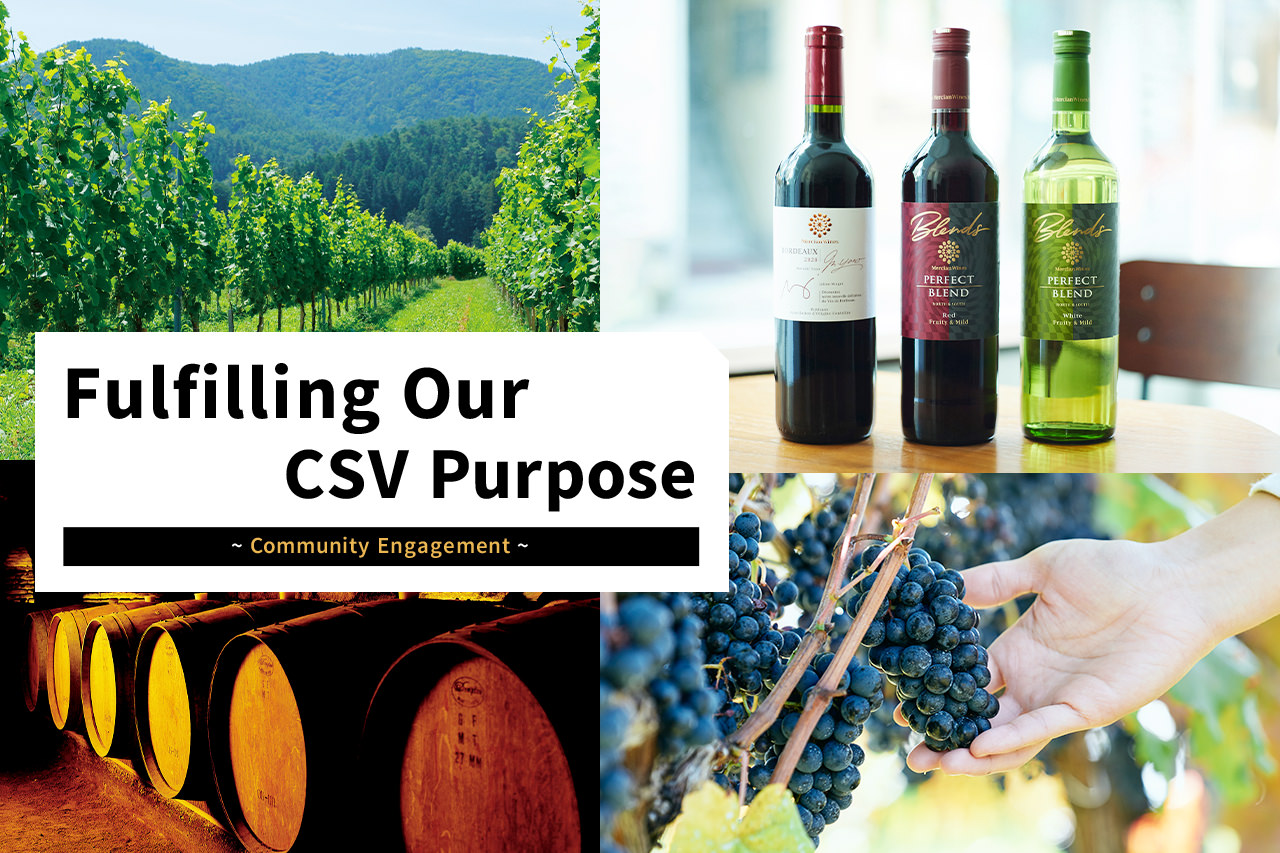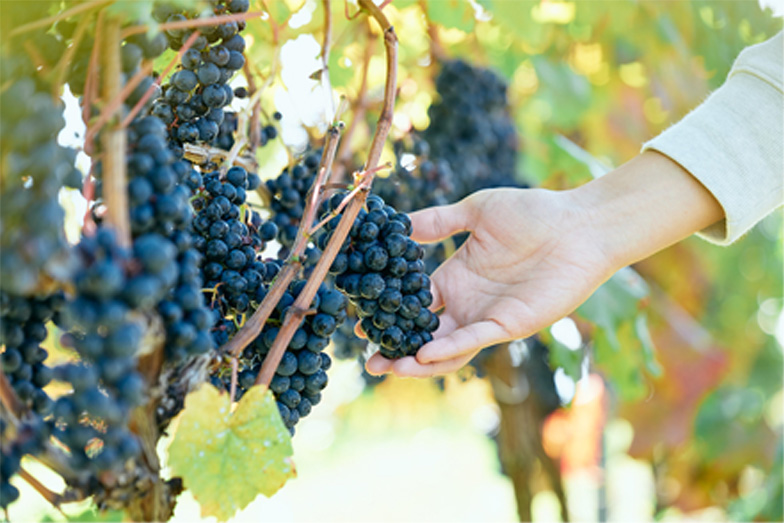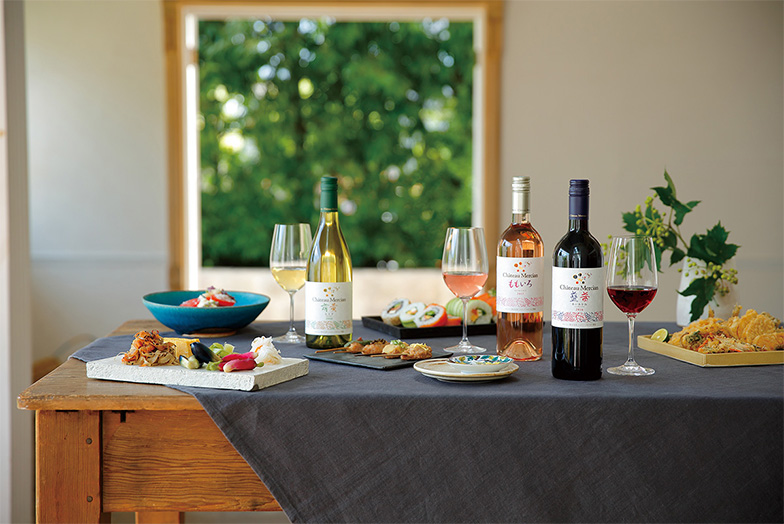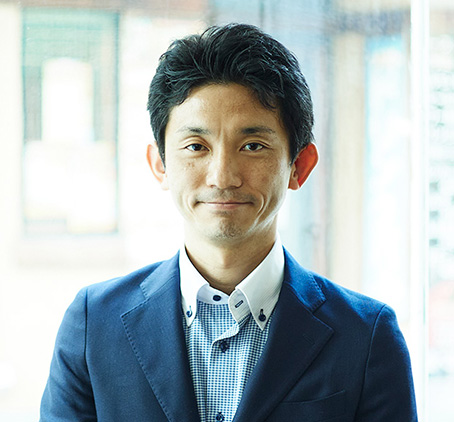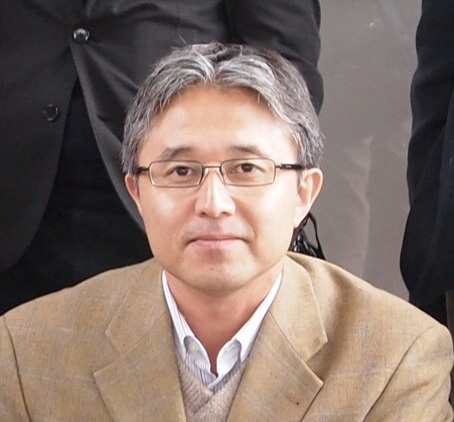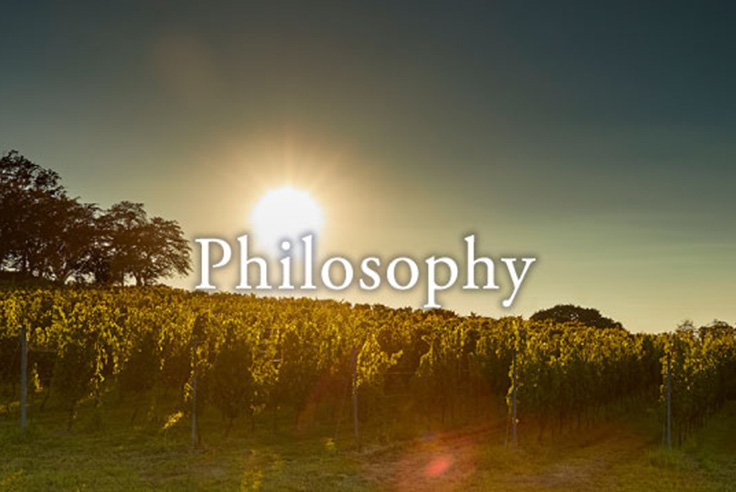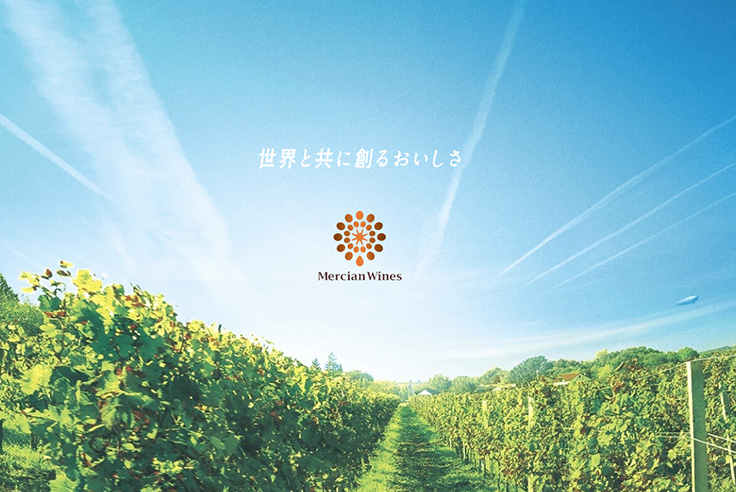Growing with regions. Mercian's DNA that is passed down and the sustainable and prosperous world that lies ahead
- Community Engagement
2022.04.27
Tracing its roots back to Japan's first private winery, Dai-Nihon Yamanashi Budoshu Gaisha, Mercian has been striving to improve and spread its production and manufacturing technologies to develop not only its own company but also the Japanese wine industry as a whole so that wine will become more familiar and attractive to Japanese people.
This story tells the future vision of Mercian and the philosophy of Shogo Asai, the former plant manager of Mercian’s Katsunuma Winery, who is called as the father of Japanese wine.
At first, we should care for the grape quality. -wine's sole raw material
There is a term "terroir" in the wine industry. Terroir is the natural environment surrounding a vineyard. Terroir, including weather conditions, soil properties, topography, and elevation, determines the flavor of a wine.
Unlike beer and sake, which are fermented by adding yeast, grapes begin fermentation with their own yeast. In other words, wine is made exclusively from grapes. Not even water is needed. Grape berries contain abundant water and sugar and the skins are covered with countless yeasts. The grape by itself fulfills the conditions needed for alcoholic fermentation.
And fermentation starts right after grapes are harvested. This is also why the wineries are located close to the vineyards. Cooperation between grape growers and wineries is essential to producing delicious wine, and the formation of industrial clusters in grape producing regions is critical. The taste of wine is influenced by both the natural environment and the local winemaker, and is truly a product of the climate.
-
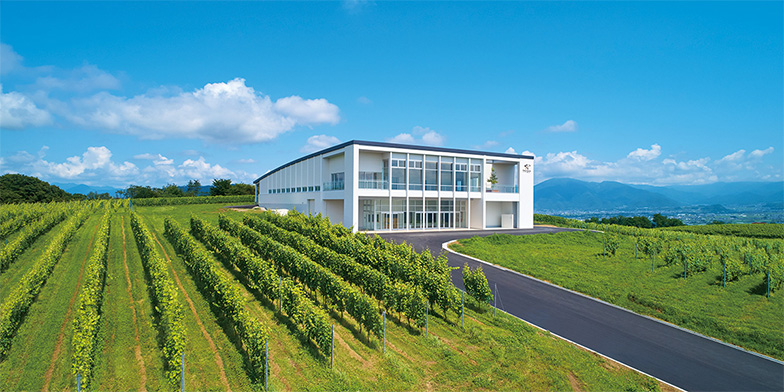
Château Mercian Mariko Winery is surrounded 360 degrees by vineyards.
The full-fledged start of wine production in Japan dates to 1877. In Katsunuma-cho, Yamanashi Prefecture (present-day Katsunuma, Koshu City), still a major grape-growing region and renowned for its wine, Dai-Nihon Yamanashi Budoshu Gaisha, the first private winery in Japan, was established, and this can be considered the origin of Mercian.
From that time until the early Showa era (1926-1989), sweetened fruit wine, made by adding sugar, sake, and flavorings was popular in Japan. In the past, wines with sharp tannins did not fit into the Japanese diet.
Mercian was also contracting with grape growers in Kikyogahara, Shiojiri City, Nagano Prefecture, to grow grapes for sweetened fruit wine. However, the westernization of food culture, driven by rapid economic growth, also had an impact on wine preferences. The liberalization of foreign wine imports in 1970 and the vivid introduction of Western culture at the Japan World Exposition, Osaka that same year gave a boost. And in 1975, consumption of fruit wine (table wine) finally surpassed that of sweetened fruit wine.
At the time, the Niagara and Concord grape varieties, both native to North America, were grown as raw materials for sweetened fruit wine. While these are easy to grow in Japan and their strong, gorgeous aroma is optimal, they are not suitable for making newly sought-after authentic wine, and Mercian had to prepare the grapes every year while enduring growing inventories due to sluggish sales.
The potential of Japanese wine pioneered together with grape growers
-
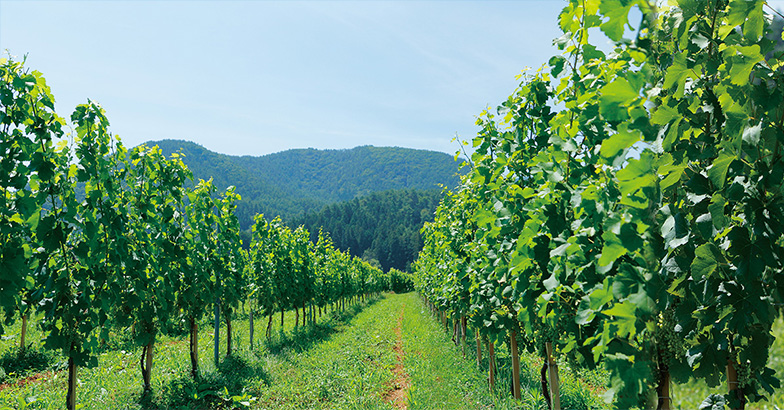
Merlot grapes growing in Kikyogahara, Shiojiri City, Nagano Prefecture
Wine is made from grapes only. So the grape grower and the winemaker are one in body and mind. Simply accepting the decline of sweetened fruit wine could have destroyed both Japanese grape growers and Japanese wineries.
It was Shogo Asai who stood in such a predicament and greatly changed the history of Japanese wine. In order to produce the authentic wines that are demanded, Asai suggested that growers stop growing Niagara and Concord, which are rooted in the area, and start growing European grape varieties. It had been a theory since the Meiji era (1868-1912) that European grape varieties are difficult to grow in Japan's climate, so Asai's decision represented a major challenge.
"Since we are growing them anyway, let's go for merlot." said Mr.Mikio Hayashi of Hayashi Farm, a Kikyogahara grape grower who was experimenting with European varieties. He had the most expertise in the terroir of Kikyogahara. Asai decided to take a gamble on Hayashi's words and persuaded other local growers who were anxious to try something new in the dark, and in 1976, merlot viticulture in Kikyogahara began.
Merlot is a grape variety native to the Bordeaux region of France. Although it is more resistant to disease and cold than other European varieties, Merlot viticulture in Kikyogahara had a difficult start. After nine years of battling with from disease and cold weather, each time referring to foreign techniques and learning from nature, in 1985, excellent grapes were finally harvested and the first single cépage was made into a commercial product.
After two years of aging, the wine was released as "Château Mercian Shinshu Kikyogahara Merlot 1985" and won the Grand Gold Prize at the prestigious Vino Ljubljana international wine competition in 1989. It was the moment when Asai's challenge overturned a theory that had remained unchanged since the Meiji era, and proved that it was possible to make wine in Japan as same as the traditional wine.
Sharing techniques to make "Koshu" a world-class variety
-
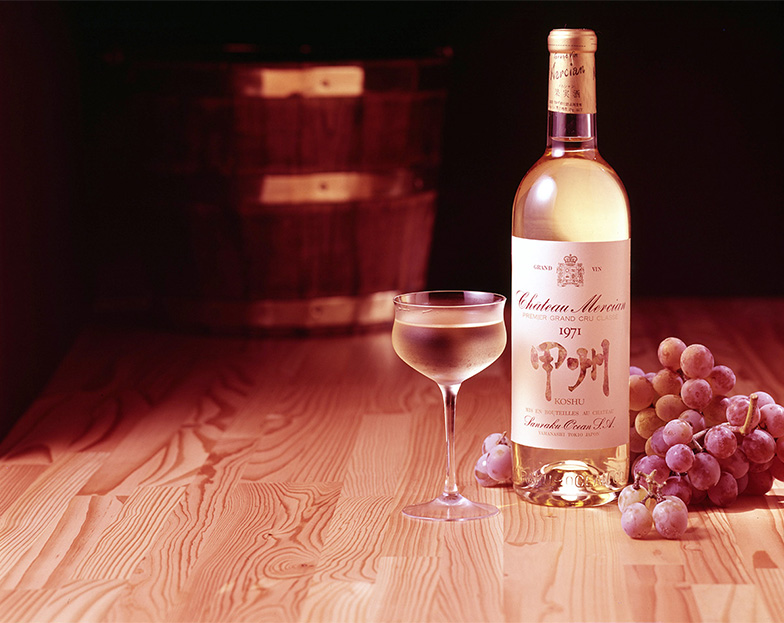
First vintage of Château Mercian Koshu
While his efforts in Kikyogahara were bearing fruit, Asai was taking on another challenge. The challenge was to develop Koshu, a grape variety unique to Japan, into a world-class variety. Koshu has been actively grown mainly in Yamanashi Prefecture since the Meiji era and has been actively used to make white wine but had been described as "its lack of character is its character".
Since the 1970s, Mercian has had an office in Europe, where it has studied vinification techniques in foreign countries in depth. One form of knowledge it obtained was the "sur lie" method, which originates from the Loire region of France. The white wine production process usually involves removing the lees that has settled to the bottom of the barrels or vats during the aging stage to prevent the lees' odor from transferring to the wine. But with the sur lie method the wine is aged at low temperature for about six months without removing the healthy, clean lees.
-
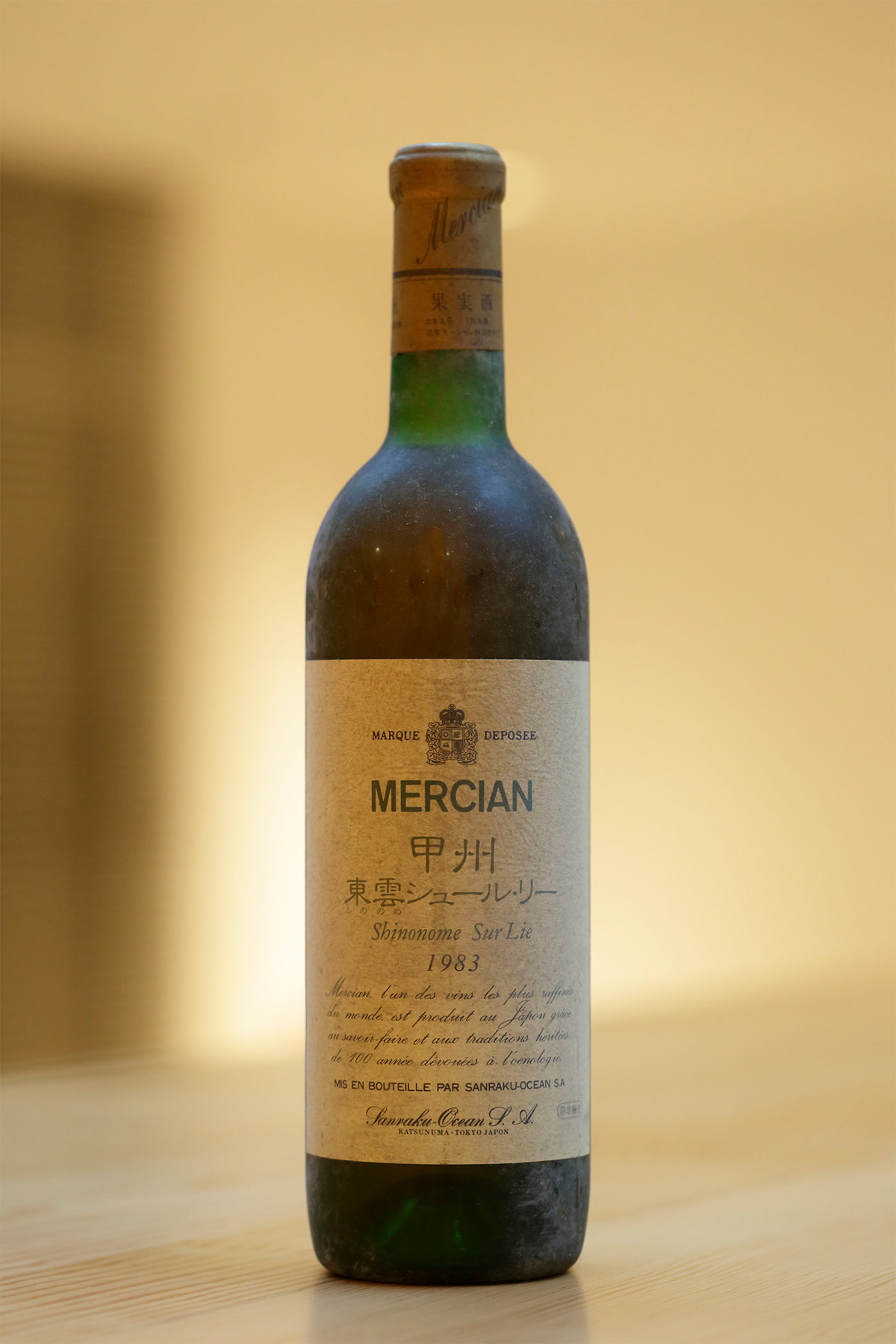
The first wine made in Japan using the sur lie method
Lees gradually break down under low-temperature aging to produce amino acids and other compounds. These components melt into the wine and add depth and breadth to the flavor. With this knowledge, Mercian introduced the sur lie method to Koshu winemaking in 1983. The Koshu wine, which had previously lacked character, was transformed into a full-bodied wine that is at the same time crisp and dry.
Koshu wine made by the sur lie method was a big hit in Japan at the time. Here, Asai generously disclosed this process, which could be considered a trade secret, to other wineries in 1985. Wines whose taste is determined by terroir are valued more highly when the entire grape-growing region is appreciated. Rather than monopolizing the technology, Mercian's priority was on enhancing winemaking techniques in Japan.
Mercian's challenge with Koshu wines has continued ever since.
In 2004, Mercian worked with the University of Bordeaux, the world's leading authority on wine aroma, and together with Dr. Takatoshi Tominaga of the same university, succeeded for the first time in extracting citrus aromas from Koshu grapes. "Château Mercian Koshu Kiiroka," a white wine that uses this technology, was launched and received high acclaim overseas.
At this time, too, Mercian made the results of its research public and passed on its know-how and techniques to other wineries. Asai's ideology of contributing to the Japanese wine industry as a whole has been passed down to Mercian's philosophy.
The advancement of wine and the deep bonds created by technical guidance overseas
-
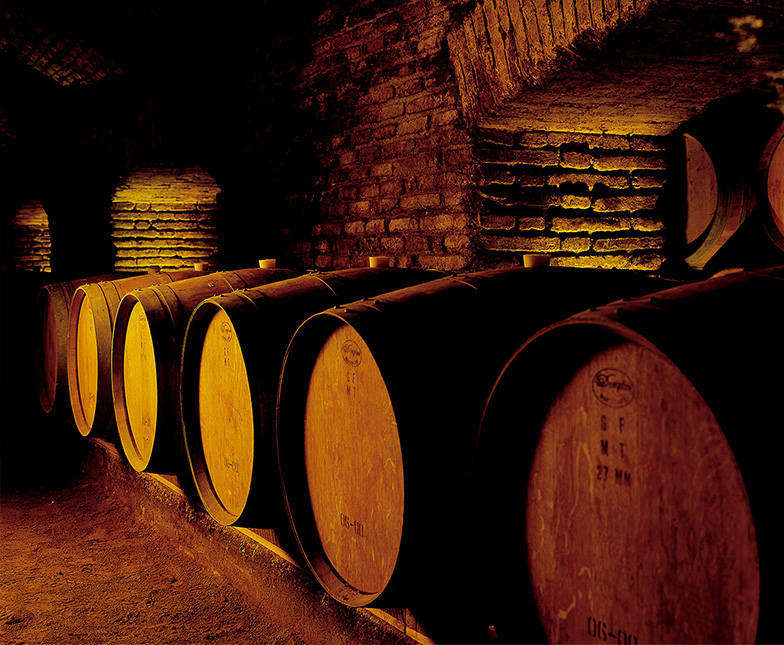
Concha y Toro winery in Chile, where Mercian previously provided technical guidance
The philosophy of growing with regions can also be seen in our business with foreign countries.
In the 1970s, the same year that Mercian embarked on merlot viticulture in Japan, it was searching for raw materials and bulk wine suppliers from around the world to secure the raw materials that would be in short supply as the domestic wine market expanded. In doing so, Mercian actively shared its knowledge and expertise with wineries overseas in order to produce affordable, authentic wines with a taste that suits the Japanese palate.
Mercian selected Argentina and Chile in South America as suppliers, but local winemaking techniques were somewhat still immature. In 1976 and 1977, Asai went to Argentina's Grupo Peñaflor and Chile's Concha y Toro, both now world-renowned wineries, to provide technical guidance.
In Argentina, for example, trucks carrying harvested grapes were seen rocking along rough roads on their way to wineries some 25km away. During the trip, grapes begin to naturally ferment. In Japan, a technology had already been established to suppress fermentation during transportation by spreading Potassium metabisulfite on the back of trucks, but this method was unknown in Argentina at the time and a solution was found through Asai's advice.
The Argentinian at the winery then said: "Now we can export our wine to the United States." Although the original purpose of the technical guidance was to ensure the export of "Mercian Quality” wines that Japanese consumers could enjoy, it has also brought great benefits to the partners, creating a strong bond between the two parties.
Asai also provided Chilean wineries with in-depth reports on areas for improvement, which led to Concha y Toro becoming a leading Chilean winery in both name and substance. The fact that in 2022, more than 40 years after the technical guidance, we are still partners in Mercian's wine import business proves the strong relationship of trust.
Mercian's goal is to enrich people's lives with wine
At the heart of both the merlot viticulture in Kikyogahara and the disclosure of technology both domestically and internationally was the philosophy and enthusiasm that wine culture and the wine industry must be developed in the entire region. Château Mercian's current philosophy of having "Japan recognized as one of the world's foremost wine regions” is also an expression of the DNA inherited from Asai.
What Mercian aims to achieve in Japan is the scene of good wine on the table, which is taken for granted in traditional wine countries. Wine with the meal, and wine tasted with the meal brings people to the table and stimulates conversation among those gathered. As loneliness and isolation due to the weakening of people's bonds have become social problems, we believe that wine can bring out communication and enrich people's lives.
Japanese wine consumption has more than tripled in the 30 years of the Heisei era (1989-2019), suggesting that wine is becoming popular on Japanese dining, but per-capita annual consumption is about four full bottles. The reality is that we are halfway to the scene that Mercian is aiming for.
-
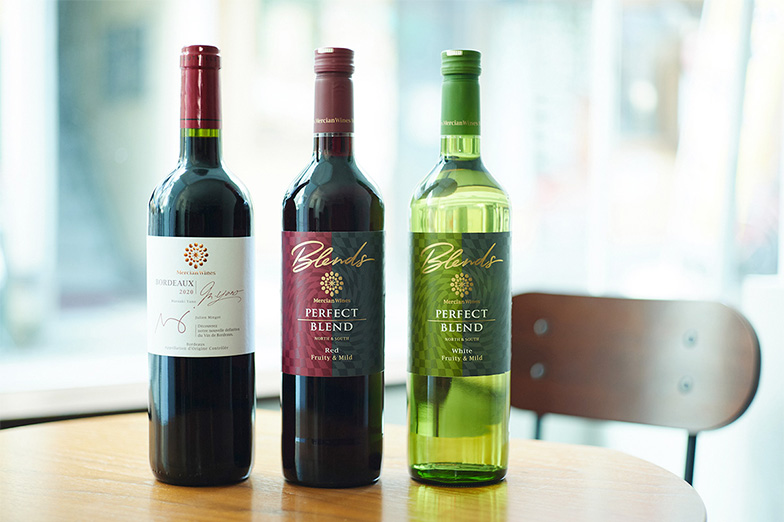
From left to right: "Mercian Wines Bordeaux", "Mercian Wines Blends Perfect Blend Red", "Mercian Wines Blends Perfect Blend White"
Therefore, Mercian started a new brand named Mercian Wines in March 2022. In response to the voice of customers “I want to drink wine, but I don’t want to make a mistake when buying it. I don’t know which one to choose.” Mercian is co-creating this brand with wineries and vinyards around the world, based on the partnerships that Mercian has built with overseas partners to date.
Originating from Japan's first private winery, Mercian has been pursuing wines that suit the Japanese since the dawn of the spread of table wine in Japan, based on the concept of "the right variety in the right place". Mercian blends carefully selected wines from around the world to offer wines that are overwhelmingly delicious.
In addition, the brand has four credos: "Reduce the burden on the environment," "Coexist with grape growing regions," "Reduce the burden on people," and "Visualize information".
For example, Mercian Wines' Bordeaux partner Vignoble Mingot has been restricting and reducing the use of pesticides for more than 10 years out of concern for the environment, plants and people working in their vineyards. Mercian Wines publishes the efforts of its partners, including Vignoble Mingot, on its brand website to communicate the thoughts of the winemakers to customers.
As the term "terroir" suggests, winemaking is an industry deeply rooted in the area. Producing quality wine requires a thorough knowledge of the local climate, which is not possible to achieve in a short time. The wine industry has been oriented toward sustainable development together with the regions long before the word "sustainable" became a focus of attention.
Wine has become familiar to the Japanese, and wine is on the dinner table. What kind of value will Mercian’s vision bring to society? Daisuke Yamaguchi, development project leader for Mercian Wines, and Atsushi Otaki, who toured wineries in Europe with Asai and now heads the Technical Department, shared their views on this.
"Sustainability is ingrained in the wine industry as a matter of course. Beyond each glass of wine, there is a story that leads back to the vineyard. The concept of sustainability is difficult to fully understand cognitively, but when seen through wine, you can surely feel the richness of the concept. We hope that Mercian Wines, with its four credos, will enrich the dining experience of our customers and, by extension, help them to understand the sustainable appeal of the wine industry," says Daisuke Yamaguchi.
"We feel that our long-standing relationship of trust with our contract growers and our pride in Mercian quality have made it possible for us to proactively share our technologies and techniques. And in order for wine to further gain a higher profile on the Japanese dining table, it is essential that we ourselves, Mercian, continue to improve the quality of our wines, as we will continue to do in the future. We will continue to cherish the DNA inherited from our company and drive the Japanese wine industry and culture," said Atsushi Otaki.
Profile
Daisuke Yamaguchi
Joined Mercian in 2001. After working in the sales department in retail and commercial sales, he moved to the marketing department in 2007, where he worked as a brand manager for Château Mercian and its overseas partners. He worked in the European office for four years from 2017, visiting many authentic wineries from the base in Paris. He is leading the development project of Mercian Wines starting from spring 2021.
Atsushi Otaki
Joined Mercian in 1992. After working at the Fujisawa Plant and Katsunuma Winery, he went to France in 1997 to work at Château Reysson in Bordeaux, France, where he obtained a DUAD (Diplôme d’Uniniversité d’Aptitude à la dégustation) from the University of Bordeaux while working in the winery and engaged in the winemaking process. After stints in Europe and at the Fujisawa Plant and serving as Vice General Manager of the Château Mercian, he has been the Technical General Manager of the Production & SCM Division since spring 2022.
*Stated information as at the date it is made
Kirin Group is aiming to partner with society in achieving mutual growth byplacing CSV at the core of its management.
We create social value and economic value by solving social issues through our business activities in the Group.Value Creation Model is our business model that amplifies the two values through a sustainable cycle of reinvesting the economic value in our drivers.
